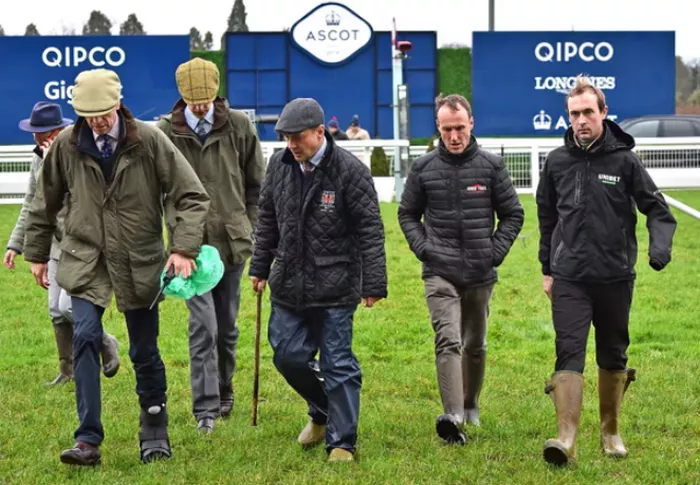The credibility of GoingStick readings, a key measurement of racecourse ground conditions, is under scrutiny following revelations by Thirsk’s clerk of the course, James Sanderson. In a recent interview, Sanderson admitted to adjusting the GoingStick readings before publication, a practice he claims is not uncommon among his colleagues. This admission has raised concerns across the racing industry, especially among trainers and bettors who rely on accurate data for decision-making.
Sanderson shared with the Barstewards Enquiry podcast that he had reduced a GoingStick reading by one point for Thirsk’s meeting on April 12. He justified the adjustment by saying that the raw figures would be misleading and that he believed many clerks of the course engaged in similar practices. His comments have alarmed the National Trainers’ Federation (NTF), which expressed concerns about the integrity of such data. The Horseracing Bettors Forum (HBF) has also raised doubts, citing a lack of trust in the accuracy of GoingStick readings.
Introduced in 2003, the GoingStick was meant to provide a precise, numerical measure of ground conditions. Unlike its French counterpart, the penetrometer, the GoingStick gauges both the penetration of the turf and the force required to pull the stick back. This provides a more comprehensive understanding of the ground’s properties and its impact on racehorses.
In practice, GoingStick readings can range from 1 (very soft, similar to swimming) to 15 (hard, like an airport runway). A reading around 5 signifies heavy ground, while a 10 is considered fast but safe for racing. Accurate GoingStick data is vital for trainers and bettors. Trainers base decisions on these readings, such as whether a horse should race, while bettors rely on the data for analyzing race conditions and making informed wagers.
Paul Johnson, CEO of the NTF, warned that manipulating GoingStick readings could lead to incorrect decisions by trainers, potentially compromising horse welfare. Trainers already face pressure to compete on ground that may be faster than the official “good-to-firm” description, with racecourses relying on betting turnover from media rights deals with online bookmakers. These deals are directly linked to field sizes, and some clerks of the course may feel pressure to adjust readings to ensure larger fields, which attract more betting.
The British Horseracing Authority (BHA) has acknowledged Sanderson’s comments and is investigating the situation. A spokesperson emphasized the importance of accurate GoingStick readings for the industry but also noted that readings should be considered in relation to the specific course, not compared across different venues.
However, the BHA’s response so far has been insufficient. With years of GoingStick data available online, the racing community deserves clarity on how much of this data can be trusted. It is crucial for the BHA to take steps to restore confidence in GoingStick readings, as they remain a cornerstone of British racing. The sport must ensure transparency and accountability to preserve its integrity and the trust of its participants.
Related topics:
- Mike’s Bikes Cat’s Hill Bicycle Race Returns to Los Gatos for 49th Year
- Two Cyclists Die During We Ride Flanders Event Amid Health Emergencies
- Evenepoel Shines in Paris, Claims Olympic Cycling Gold in Dramatic Fashion

